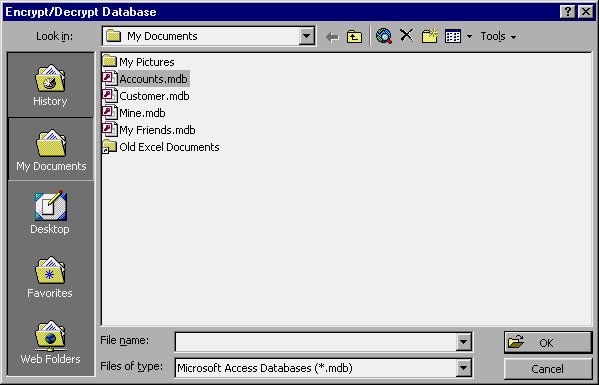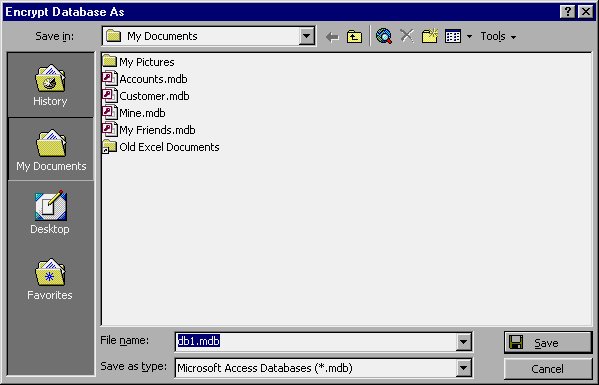Learn Access Now! Chapter 15 Previous Section in Chapter 16 Next Section in Chapter 16 Chapter 17
Chapter 16: Ensuring Data Security
(This is section 2 of 7 in this chapter)
Using Database Encryption
One of the drawbacks of password protection (which you learned about earlier in this chapter) is that it protects only the front door of your database. If someone chooses to not use the front door, often they can uncover the data stored in your database. For instance, someone could load your database into a third-party utility or a word processing program and see the raw data stored there.
One way around this problem is to use data encryption. This simply means that the information in a database is "scrambled" using a mathematical algorithm so that it cannot be understood by any application other than Access. This option is particularly useful if you are going to send the database to a different user, and you want to make sure it is secure during transmission or transport.
Note: Encryption, by itself, does not stop someone from opening a database in Access. Thus, encryption does little good if it is used without some other form of protection, such as a database password. Make sure you use encryption with some other form of protection, as well.
To encrypt a database, make sure you don't have any databases open. You cannot encrypt a database if it is open. Choose the Security option from the Tools menu. Access displays a submenu from which you should choose Encrypt/Decrypt Database. Access then displays the Encrypt/Decrypt Database dialog box, as shown in Figure 16-6.

Figure 16-6 Picking a database to encrypt.
All you need to do is use the controls in the dialog box to select the database you want to encrypt, and then click your mouse on the OK button. Access then displays the Encrypt Database As dialog box, shown in Figure 16-7.

Figure 16-7 Specifying a name for the target file.
Here you need to supply a name (and optionally a different location) for the encrypted database that Access is going to create. The original database is not affected; only the newly created file is encrypted. Once a name has been provided, clicking your mouse on the Save button starts the actual encryption process. When completed, you have two versions of the database: one encrypted and one not. From this point you should use one or the other, but not both. Remember that you can still use an encrypted database in Access, the same as you would use a regular database.
Learn Access Now! Chapter 15 Previous Section in Chapter 16 Next Section in Chapter 16 Chapter 17